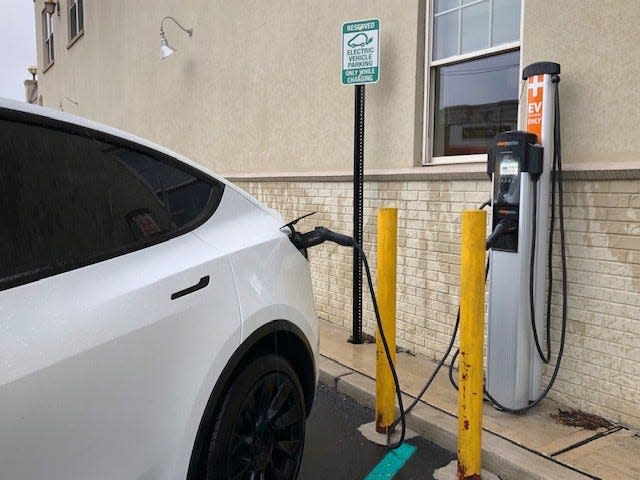NJ offshore wind means 9,500 jobs by 2045, advocates predict
New Jersey's transition to a green energy economy will add thousands of new jobs to the state's economy, according to two new reports released Tuesday by the Applied Economics Clinic, an group that analyses policy in climate change, energy and environmental justice.
Of those new jobs, more than 9,500 will come from the offshore wind development sector by the year 2045, according to the clinic's new reports.
"We're poised for even more (jobs), if we have more aggressive offshore wind goals," said Debra Coyle, executive director of the NJ Work Environment Council, an alliance of community and environmental organizations.
"We want to make sure that we're creating good jobs here," she said. "We don't need low-wage jobs in the state. We need jobs with living wages. And this report shows that job growth through a green economy is far greater than job loss."

Despite job losses that will result from the energy transition — those in gas-fired power plants and oil heating, for example — New Jersey can expect a net gain of more than 11,000 jobs, according to the Applied Economics Clinic reports.
New Jersey produced 97 million metric tons of carbon equivalents in 2019, according to the state Department of Environmental Protection. About 40% of those emissions came from vehicles and the transportation sector, according to the department. Another 20% were produced from generating electricity.
Global carbon emissions have been tied to increasing sea levels around the world as well as climate change, conditions that threaten to swamp New Jersey coasts in the long term and overheat cities and suburbs. The changing climate is also expected to increase rainfall and storms across most of the state, and put New Jersey at greater risk of a strike from a serious hurricane.
Storm resilient building at the Shore: How do we build against the future?
In 2019, Gov. Phil Murphy, through an executive order, set a goal that 7,500 megawatts of the state's energy be generated by offshore wind by 2035.
In 2021, the governor directed state agencies to find other ways to reduce greenhouse gas emissions to 50% below 2006 levels by 2030. By 2050, the state's goal is to be at 80% below the 2006 emissions level.

These initiatives and related tax incentives and programs are helping to drive the new green energy sectors: offshore wind development, electric vehicle sales, energy efficient building construction and solar power, to name just a few.
"This is a this is a very unique opportunity," said Marcus Sibley, chairman of the state NAACP Environmental & Climate Justice committee. "The (new) sector is going to give us opportunities that we've never had in our lifetime. We haven't had anything like this, a boom of this nature, in decades."
Sibley, who also serves as chairman of the New Jersey Progressive Equitable Energy Coalition, called for state policies to help people of color in New Jersey get access to these jobs and training programs in order to participate and benefit from the burgeoning job markets.

"These clean (energy) jobs have an opportunity to change the way people have lived and will live going forward," he said. "We live in a country where due to various practices, certain groups — Black, brown, poor — have been left out of economic opportunities. So when we have opportunities where it's going to be jobs, we need to be very intentional about making sure that these groups are getting training for these jobs, and then getting placed with these jobs."
In New Jersey, although white people make up 55% of the state's population, they hold 62% of clean energy jobs, according to the Applied Economics Clinic reports.
"I think we have this really unique opportunity," said Coyle, of NJ Work Environment Council. "But in order to do it right, we have to have the right policies in place."
Environment: NJ is a cheapskate with state parks, environmentalists claim
Amanda Oglesby is an Ocean County native who covers Brick, Barnegat and Lacey townships as well as the environment. She has worked for the Press for more than a decade. Reach her at @OglesbyAPP, aoglesby@gannettnj.com or 732-557-5701.
This article originally appeared on Asbury Park Press: NJ job outlook: offshore wind development, green energy path to growth

